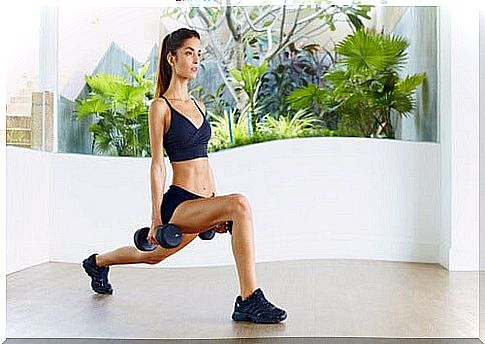More Weight Or Doing More Reps?

Those who go to the gym or train at home will have asked themselves, sometimes: which is better? Lift more weight or do more reps? It all depends on the goal you want to achieve. To find out more about it, keep reading this article.
Lift more weight or do more reps?

This is probably the million dollar question and is accompanied by other questions, such as what is the most effective way to strengthen and build muscle or how to lose weight faster.
First of all, it is good to know a very important fact: to make progress in the gym and reach our sporting and physical goals, we cannot always train in the same way. This means that regularly, after a certain number of days, it is crucial to make some changes or improvements.
If you always lift the same weight, if you always do the same amount of repetitions, or if you always run at the same speed, your body gets used to it and reaches a “low” threshold or ceiling.
In this way, he tells us that he gets to that point and that we don’t have to ask him for more effort. The result or consequence of this habit, quite rightly, is not getting any change or improvement.
Even though the body is increasingly resistant to exercise (and this is also good news) we cannot get “stuck” in the same workout. Also because it is very boring.
Changes are necessary because they allow us to improve and achieve our goals or at least to bring us closer to them. If we want to have more muscle, we will always have to lift more weight than we are used to.
Therefore, the number of repetitions does not matter, but the kilos that we can add to the bar or machine in question. Progression is very important, because this is how the body gets used to it.
But beware: all this does not mean straining it at all, because the consequence could be that of causing muscle and joint injuries which, in addition to being painful, take us away from the goal. It is not recommended to add a lot of weight in one go – it is better to proceed slowly.
More reps = more progress?
As for the repetitions, however, perhaps we are “allowed” to change them to our liking and also to reduce the amount, if we lift more weight.
The problem is that the body gets used again in a short time (reaching the ceiling), and if we do not introduce any changes, we do not improve and we do not progress.
Instead of lifting more weight, it is recommended to do more repetitions with the same weight. When the same weight and the same repetitions are no longer a challenge, then you can modify the exercise by introducing variables.
Thanks to the repetitions you will be stronger because you will develop the muscles and the body will be more resistant to fatigue. Plus, you will burn more fat and more calories. Increasing reps doesn’t always have to go hand in hand with weight gain, but you can alternate between changes.
A good weight lifting technique is to lift less weight by doing more repetitions. This focuses on movement and avoids injuries due to excessive weight without preparation.
It is recommended not to exceed 16 repetitions. If that’s not enough, you need to increase the load. The important thing is the alternation in order to progress slowly. As you manage to lift more weight, the reps will also increase and vice versa.
To gain strength: more weight or more reps?

Hypertrophy (more muscle) is one of the main goals in the world of fitness. For this reason, we have to produce muscle damage, which leads to protein synthesis and the building of muscle fibers (during the recovery process).
- This process is influenced by three factors: mechanical stress, metabolic stress and muscle damage.
- In order to build muscle mass, we need to perform between 3 and 5 sets of up to 12 repetitions, with breaks ranging from 1 to 3 minutes.
Strength and endurance are the other two pillars on which athletes focus. The type of weight-set combination depends on the result you want to achieve.
- To strengthen the muscles, we recommend between 4 and 8 sets of 1 to 3 repetitions, with the maximum capacity we can lift.
- To be more resistant, you have to lower the load and increase the repetitions (from 12 to 16).
Sessions with high loads increase strength, but this training can have consequences and risks. For example, it can cause injuries or negative adaptations.
Low loads are less “harmful”, but the results are smaller. Provided they are done with planning and assistance, both practices can be healthy.
To burn fat: heavier weight or more reps?

This is another of the most frequently asked questions in the gym. While there are many myths about this, the truth is that doing exercises with adequate weight and repetitions and increasing them over the weeks (depending on your progress) is going in the right direction.
Many people associate calorie burning with aerobic exercise (such as a treadmill or stationary bike) and not with a weight lifting session. In fact both can complement each other to lose weight.
It is also not true that doing more reps reduces fat. It all depends on the intensity you apply to the workout. High loads and fewer repetitions allow you to gain more muscle mass and, therefore, less fat mass.
If we are looking to burn calories and gain muscle, then it is better to put weight before light reps. However, if our only goal is to lose weight then it is advisable to do more sets with fewer loads.









